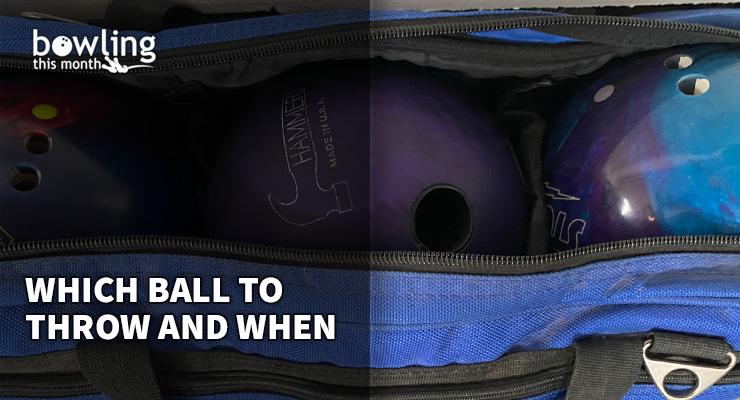Article Contents
- 1. Having the right equipment
- 2. The simple approach
- 2.1. The five ball reactions
- 2.2. The ball reaction trap
- 3. The infinite environment conundrum
- 3.1. Oil variables
- 3.2. Lane variables
- 4. The simple approach
- 4.1. Friction and responsiveness
- 5. Putting it together
- 5.1. The system
- 6. Conclusion
Note: This article is only available to Bowling This Month subscribers.
Probably some of the most common questions that coaches receive are about when to make a ball change and how to know which ball to use at any given time. Once you’ve expanded your bowling bag to more than two balls, this becomes a key point of confusion, and the more balls you have, the more confusing it can be.
When you start including the various lane conditions, surfaces, topography, and all the other variables (not to mention your physical game adjustments), it’s easy to become paralyzed with options. The challenge, particularly at the amateur level, is to keep things simple.
Over the years, I’ve devoted some significant time to writing articles to help people identify the clues of ball motion and lane play, use a good decision-making process based on shot quality, and master the various lane play skills they’ll need in order to adjust effectively (loft, speed, and axis control). The goal of this article is to boil things down to their simplest level and focus only on the art of the ball selection.
Having the right equipment
The first step to making good ball choices in competition is having the right balls at your disposal. In my article, Building your Bowling Ball Toolshed, I discussed suggested setups for your bag, based on how many balls you’re going to have. Without going into too much detail here, the main considerations for your equipment should be to cover all the possible combinations of relative ball strength (i.e. how much oil it can handle) and responsiveness to friction (i.e. smooth versus angular). What I didn’t do was talk about how to match those up to the competitive environment, which we’ll be dealing with here.
The next step is understanding your equipment and where on the lane each ball hooks. Josh Blanchard shared great advice about ball reaction in his first Tips for the Weekend Warrior piece. Making sure that you have all your hook zones covered is the ...
Already a premium member? Click here to log in.


 (Only
(Only 